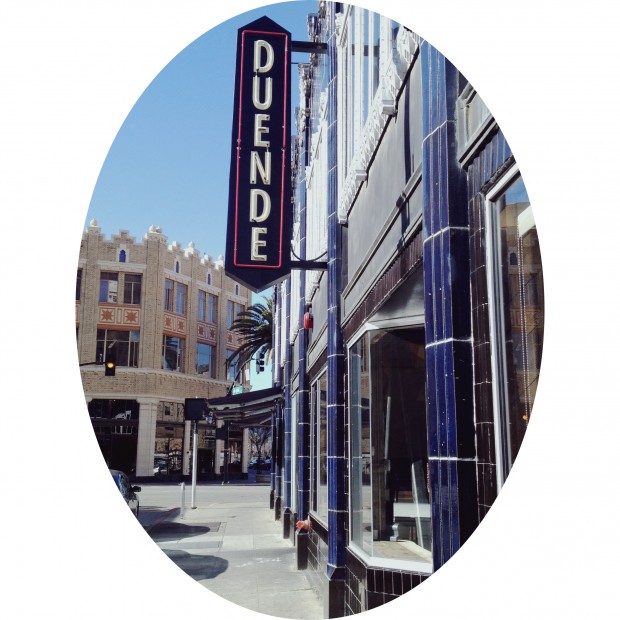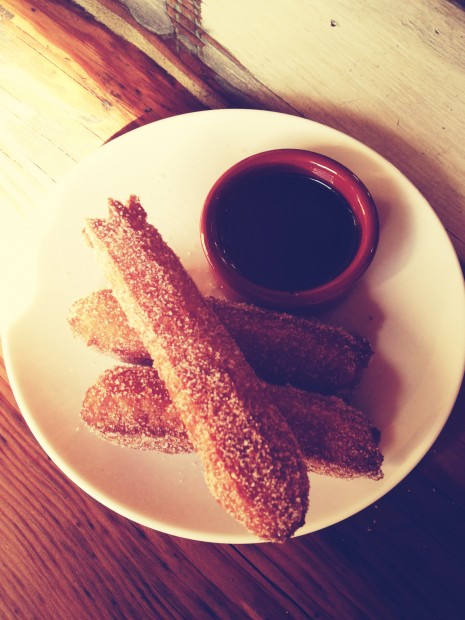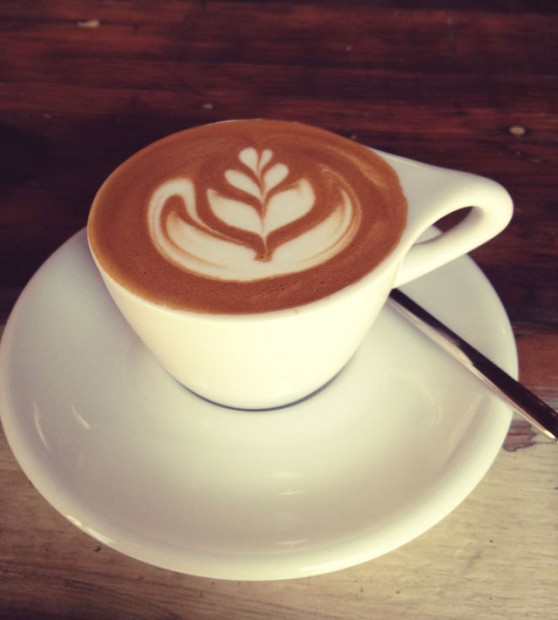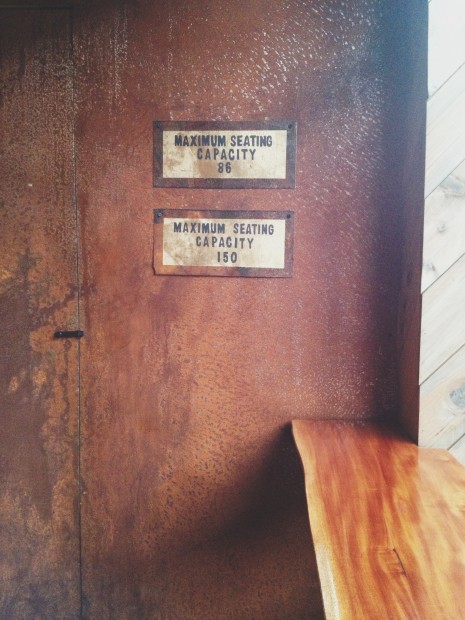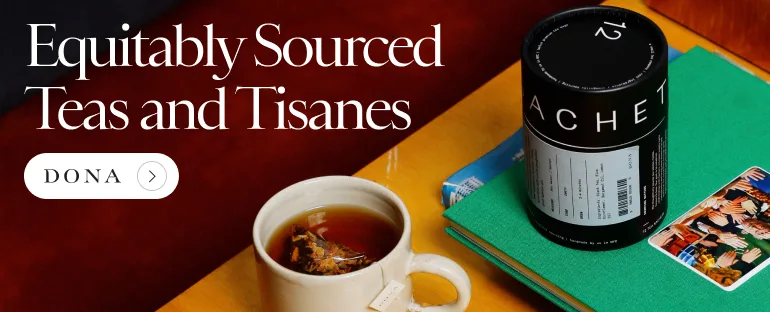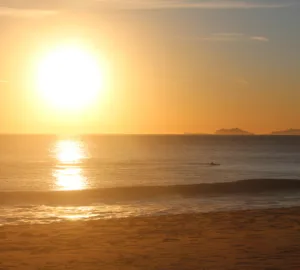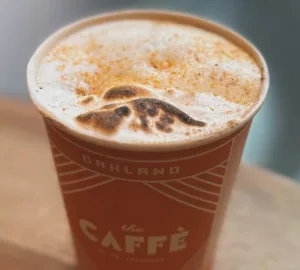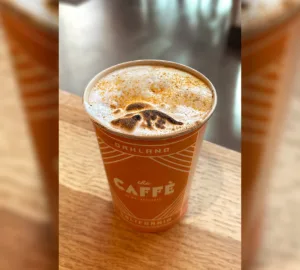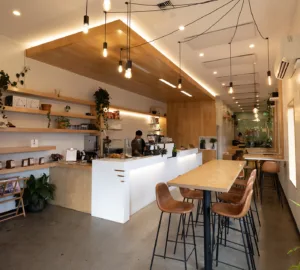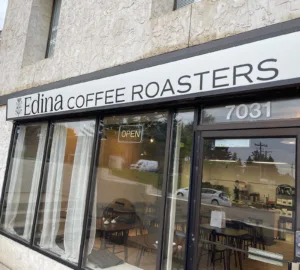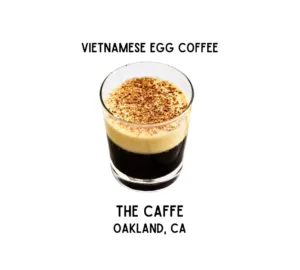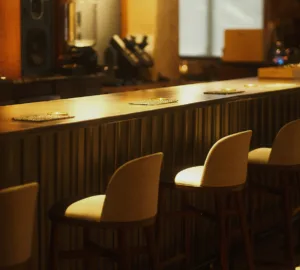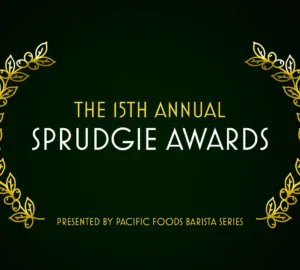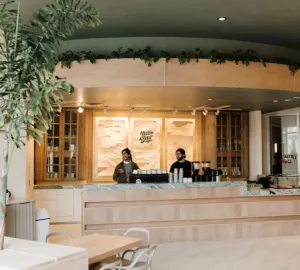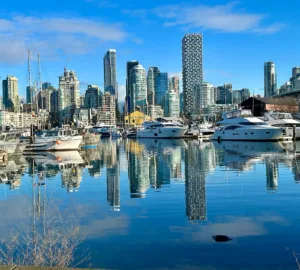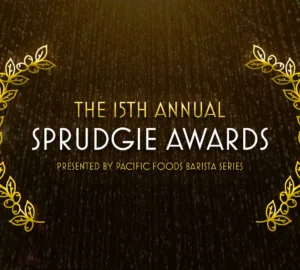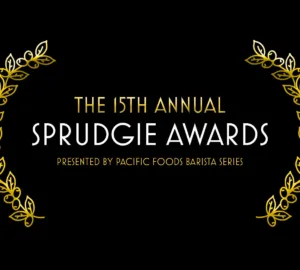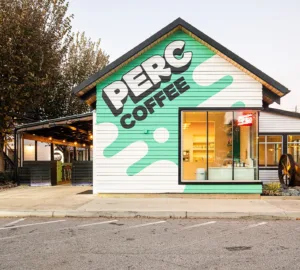People are cheek-pressed against windows to see inside. The windows are tall, and it’s going to take a lot of vinegar to get their cheek smudge off, but I don’t blame them. The interior is stare-worthy.
Like most contemporary things, it isn’t precious. There is welding with visible solder seams, uneven pieces of lumber, and a deconstructed meat-and-potatoes allure. The design is fastened, burned, and cut. All the sandpaper lines and rough edges make it hard to see the hand-carved stools that are, unlike the farm tables, relentlessly smoothed and stunningly elemental.
The latest food-design trends are visible, I admit. The neon sign outside is reminiscent of Momofuku Milk Bar’s famed “milk” signage and the longer wood tables are pull-up-a-stool pub style, not unlike the cocktail tables at The Publican in Chicago. Sure, it’s kindred to design trends, but it all looks special. Every piece looks like it has a compelling history, every piece looks intentionally placed, and it all serves to make Duende look like it’s been here, right here in this spot, forever. Duende isn’t miming an issue of Gastronomica; it is a place very much in conversation with the moment, an actor in Oakland’s evolving cityscape of seasonal food, rotating art, rotating musicians, and sense of malleability.
This evolving permanence—evident in the colossal collage art that’s taller than my own frame and includes the palette with dried acrylics—makes sense considering that Duende is premised on a single idea from start to finish: Paul Canales is making something new. There’s a sort of improvisational play felt in the design, menu, and atmosphere. It’s fitting that, when I walk in, someone is affixing a shelf to a wall (they only opened a week ago), it feels natural to see people working on keeping Duende as a permanent work in progress, a process or a piece of art.
Commuter cyclists stop, park, and walk inside just to see the place. One such cyclist stops next to me, helmet still affixed to his head, and says, “This place looks ah-mah-zing.” I like his face. I like how he looks at the dreamy wood, pewter, and terra-cotta colors around him, how he doesn’t care to look at a menu, just wants to get a good gander. Blame my Midwestern values, but I try to talk to him: “Yeah, it’s pretty nice to look at right?”
But this isn’t the Midwest, this is Oakland. He doesn’t dismiss me, but he certainly doesn’t pay attention to me, he just keeps looking up at the high ceilings, brick interludes, and planks of reclaimed wood before walking out again. This is what’s impressive about Oakland: People here know their city. They know when something is new and they stop to see what’s happening inside. Oaklanders are in intimate commune with the city and with anything new that happens there. In the downtown district, amid 1950s art deco, Duende is something new.
Its concept is new, too, and actually kind of hard to describe adequately. Duende is not just a restaurant, and it isn’t parading around as some luminary new food trend, but one part of it is reviving and updating a community space: The bodega.
In my hometown, we called this the corner store, but the Spanish la bodega means more or less the same. This where people can buy most anything that they might need for their day, whilst hanging out together and affirming their place in the community. It makes sense in Oakland, in a city where the people know what fills every window, to have a space to gather. The bodega is half of Duende. Don’t expect to find milk and eggs to-go here, but do expect to find coffee, a good pastry, olive oil, wine… you know, the real necessities. And definitely expect the same general store gossip. During my time there, I successfully eavesdropped on conversations that ran the gamut from critique of the inaugural poem to whether or not Sam stayed over at Jen’s house last night. More important than the conversation, people ask for each others’ names, talk to strangers, and share the space together.
At noon, besides me and my partner, there are four customers in the bodega. I order a cappuccino, an oolong tea, and a plate (three) of churros, which come with chocolate dipping sauce. The churros, along with the other choices like salted chocolate cookies and cardamom teacake, are made in house and serve as a good reminder of how awesome it is to be a coffee shop attached to a working restaurant. The chocolate dipping sauce, described by the barista as “crack”, has a chipotle bite to it, and the churros are perfect. I’ll even go out on a limb and say they are “authentic,” by which I stake no claim as to expertise on the authenticity of the humble churro, I merely mean that you should get them when you go.
And then there was this cappuccino.
In the afternoon, in winter, I want a cappuccino. I want, specifically, this cappuccino because I can taste the fruit and floral bean flavors, the super sweet presence of espresso and because the crema on top is a reddish brown and separated by a four tiered tulip. It was visually stunning and perfectly made, and it also taught me a lesson: When something has just opened, and the barista looks a little green (re: young), do not automatically lower your expectations. This is what I did here, at Duende, and I was totally, completely wrong. Like tail between my legs wrong. Jessica, if you are reading this, I’m sorry I didn’t know how perfect you could be.
Jeff Garcia manages their coffee program, and he asks me how my drink is with all sincerity. “I care too much,” he tells me, before sitting with me for over a half hour, chatting with me and the guests at the table next to us, Sage and Ellen, who are decked out in some pretty hip hats. Sage joins our conversation when the topic turns Verve Coffee Roasters, whom Mr. Garcia is serving at Duende. “Oh, I came here for that coffee,” Sage shares, and Jeff listens as we talk about our coffee preferences, what we think about the seating at Duende, and how much downtown Oakland has changed in the past few years. He listens and takes in praise as much as criticism. When our conversation raps up, Ellen says, “Thank you for listening, it’s rare” and Jeff thanks her in return. This is bodega-style talk.
Then a flour-covered Paul Canales himself comes out to talk to Jeff. Mr. Canales fist pumps the room to avoid getting flour on everyone, and before I know it, he’s telling me about their coffee program. “We had to do due diligence. We did all the tastings, we tasted a lot of coffee.” And everyone seems happy that they picked Verve. The baristas like to talk about its roast profile, and the phrase “they are killin’ it” keeps getting tossed around, which is one of those northern California regionally colloquialisms that I can’t naturally say, but I’m pretty sure I like hearing other people say. It hits me that, right now, both the chef and the coffee program director are taking the time to sit in the bodega and just hang out. To borrow another California phrase, I believe they are “bro-ing down” with me, and this interaction makes it obvious that the bodega and its ideals are the real cornerstone of Duende. Everyone—everyone—is hanging out together with barely a whiff of status or pedigree distinction. It is truly a shared space.
In between talking about coffee shops and talking about the downtown revival, Jeff points out more small details in the bodega. The wine shelf is organized as a map of Spain so you can follow the terroir and taste each location. The olive oils are all $18 and rotate based on seasonality; you can taste them with bread and read extensive descriptions. Coffee’s role in the bodega is similarly important, part of that same field of details in a very important way.
I have to admit that despite this assignment, as I was driving into Oakland (on the 17, which takes like an hour from where I live) and pondering how badly I needed a coffee, I didn’t actually think of Duende. I didn’t think of it because it’s been heralded as Paul Canales’ new restaurant, SF Eater’s anticipated new spot, and part of Oakland’s new foodie scene. If Duende didn’t call me to confirm my dinner reservation, I would have ended up at SubRosa getting a cappuccino and sitting outside while waiting for dinner. I mention this to Jeff around the same time Sage mentions how many new restaurants there are and Jeff alludes to his own philosophy of not worrying about everyone else and just doing the best he can do to make sure that, if his name is on it, it shows hard work, effort, and passion.
Even with that proletariat and diligent ethic, this is one of the obstacles Duende will face. How will it be as a coffee spot? How will it be “let’s meet at Duende for an espresso” instead of “let’s meet at Duende for dinner”? If the cappuccino is any testament, it’s going to become a coffee spot by serving good coffee. Jeff and his staff are going to keep listening to their clients and keeping the community feel of a bodega strong enough that Duende will become more than just a restaurant.
Let’s not forget that there is a restaurant. Next to the 45 person capacity bodega is a 86 seating capacity restaurant. To get a seat at the banquet table (there are also private tables available for reservation) my cohorts and I hang out at the bodega again. After five, the bodega has no chairs. It’s serving wine, and an excellent selection of Spanish sherry, which all of the staff can tell you about in robust detail. Of course, coffee service is still strong and it looks like the 5 pm crowd takes their pre-dinner macchiatos seriously.
I peek over into the restaurant before the 5:30 open—I mean, I sit at the bar in the restaurant and pretend like I belong there—so I can watch the staff do a tasting. To my surprise, Jeff comes over and takes me to the chef’s table, shows me each plate, and discusses what is tasting extra good. There’s that service again, that feeling that you are in someone’s home and they are showing you food coming out of their own kitchen.
Outside, a line is forming for the banquet table; more cheeks against windows.
We are seated at 5:45. Folks here are dressed in pretty casual clothes, lots of denim on denim, and a few stand-out button down shirts—one red velvet, another rainbow striped. Again, lots of hats. Maybe it’s a winter 2013 thing I missed out on, but there are at least two leather newsie hats spotted and a whole handful of fedoras and derbys.
The food varies from tapas to sharing plates and we let our waiter, Carl, guide our orders. If we were here to talk about the food, this would be an entirely different review (focused mainly on paella). Here’s what matters: Dessert and espressos.
The espresso is Verve’s Sermon blend and Jeff brings it out from the bodega to the restaurant for us. Sermon is made up currently of fine Brazilian, Ethiopian, an El Salvadoran coffees. Our shots are decadently sweet, and they come served in traditional flatware on a cork tray with a rocks glass of sparkling water. It’s the way you want coffee served after a nice dinner; it makes the espresso feel like part of the dessert and not just a compliment to the meal. The espresso is as it should be.
When we walk out, taking the longer way through the bodega again just to see how many people are enjoying espresso and sherry, we see Dali’s head illuminated in a corner. To me, this seems fitting. In Dali, we see simple settings with varied things; it’s like this with Duende. There is romantic experimentation, but the concepts being worked on are extremely pure and formal. Duende, for coffee, is bringing back community and continuing to care for the way the product is handled and presented to the community it serves. It is a wonderful restaurant, a wonderful dining experience, yet simultaneously, gloriously home to la bodega for the people.
Kristen Orser-Crouse is an instructor at the University of California – Santa Cruz, with a focus on poetry and Russian literature. She’s written previously for The Rumpus, The Examiner, and Poor Taste, and is an accomplished author of original poetry. This is her first feature for Sprudge.com.











